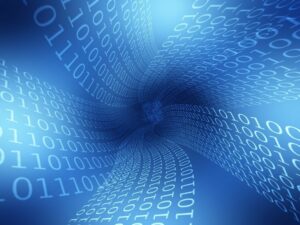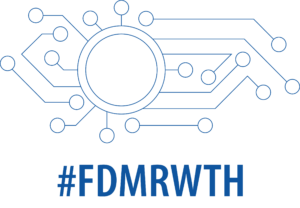
Quelle: Pixabay
Es wird wieder Zeit für unsere Reihe „FDM erklärt“, in der wir Ihnen wichtige Begriffe und Informationen für das praktische Forschungsdatenmanagement an die Hand geben.
In der heutigen Zeit sind digitale Informationen fester Bestandteil unseres Alltags. Ob Nachrichten in den sozialen Netzwerken, digitale Fotos, Dokumente oder Videos – auf all diese Daten möchten wir möglichst lange zugreifen. Doch der dauerhafte Zugriff auf digitale Daten ist nicht nur im privaten Bereich ein wichtiges Thema, sondern auch im Forschungskontext. Die langfristige Nutzbarkeit von Forschungsdaten ist Voraussetzung für den wissenschaftlichen Fortschritt. Dieser Beitrag bietet deshalb eine kleine Einführung in die digitale Langzeitarchivierung.
Langzeitarchivierung – Was steckt dahinter?
Digitale Daten sind Bits, die auf Datenträgern gespeichert werden. Jede Datei besteht aus einer festgelegten Abfolge von Bits (Bitstream), die entweder den Wert 0 oder 1 haben. Die Fähigkeit, den Bitstream über Technologiewechsel hinaus langfristig zu erhalten (Bitstream Preservation), ist die Grundlage digitaler Langzeitarchivierung. Denn durch den stetigen technologischen Wandel besteht immer die Gefahr, dass Datenträger, Dateiformate, Software und Ablageorte unzugänglich und unbenutzbar werden. Die digitale Langzeitarchivierung muss sich daher auf entsprechende Veränderungen einstellen. Sie ist ein Prozess, der regelmäßig Aufmerksamkeit erfordert und nie endgültig abgeschlossen ist.
Dateiformate und Erhaltungsstrategien
Bitstream Preservation allein reicht für die digitale Langzeitarchivierung jedoch nicht aus. Damit vor allem Forschungsdaten langfristig korrekt sowie ohne Verluste wiedergegeben und interpretiert werden können, bedarf es an ausreichend Kontextinformationen zu den verwendeten Erhebungsmethoden, Soft- und Hardware, Kodierungen sowie Metadaten.
Für digitale Daten ist zudem das funktionierende Zusammenspiel von Hard- und Software essenziell. Durch den stetigen Technologiewandel besteht die Gefahr, dass bestimmte Formate irgendwann nicht mehr von der verfügbaren Soft- oder Hardware unterstützt werden. Deshalb kann es notwendig werden, die Ausgangsdateien in neue Formate zu migrieren (Migration) oder die ursprüngliche Soft- oder Hardware-Umgebung durch Emulatoren nachzubilden (Emulation). Gerade proprietäre Dateiformate erschweren diese Erhaltungsstrategien. Frei verfügbare Formate (Open Source) sind besser geeignet, da ihre Spezifikationen offen dokumentiert und nachvollziehbar sind. Sie sind unabhängig vom Herstellenden und können mit unterschiedlichen Programmen geöffnet und verändert werden.
Woran erkennt man ein vertrauenswürdiges Langzeitarchiv?
Im August 2012 wurde das Referenzmodell Open Archival Information System (OAIS) für ein dynamisches, erweiterungsfähiges Archivsystem als ISO-Standard 14721:2012 veröffentlicht. Die Implementierung des Standard-Referenzmodells wird von vielen digitalen Archiven und Repositorien zugesichert. Verschiedene Evaluierungsverfahren prüfen die Umsetzung dieser grundlegenden Funktionalitäten und somit die Vertrauenswürdigkeit der Langzeitarchive:
Die RWTH kann zur echten Langzeitarchivierung besonderer Forschungsdaten auf das Angebot des Hochschulbibliothekszentrum des Landes Nordrhein-Westfalen (hbz) zurückgreifen und die dort betriebene Infrastruktur zur Sicherung digitaler Langzeitverfügbarkeit nutzen.
Für die standardmäßige Archivierung von Forschungsdaten im Sinne der guten wissenschaftlichen Praxis nutzen die Forschenden der RWTH Aachen University die Integrationsplattform Coscine. Mit dieser können Forschungsdaten langfristig und effizient gespeichert, organisiert und archiviert werden.
RWTH Datenbestände, die sich nicht als Forschungsdaten klassifizieren lassen, können von RWTH-Mitarbeitenden (mit entsprechendem Status im Identitymanagement) im DigitalArchiv langfristig aufbewahrt werden.
Mehr erfahren
Weitere detaillierte Informationen zur Langzeitarchivierung von Forschungsdaten finden Sie in den NESTOR-Handbüchern oder über das Nestor-Wiki. Auf YouTube findet sich zudem ein kurzes E-Tutorial zum Thema „Forschungsdaten Archivieren an der RWTH Aachen University“.
Wenn Sie Fragen zum Forschungsdatenmanagement haben, wenden Sie sich einfach an das ServiceDesk. Das FDM-Team freut sich auf Ihre Nachricht.
Besuchen Sie für weitere Informationen zum FDM auch die RWTH-Webseiten.
_____
Verantwortlich für die Inhalte dieses Beitrags ist Sophia Nosthoff.





Schreibe einen Kommentar
Du musst angemeldet sein, um einen Kommentar abzugeben.